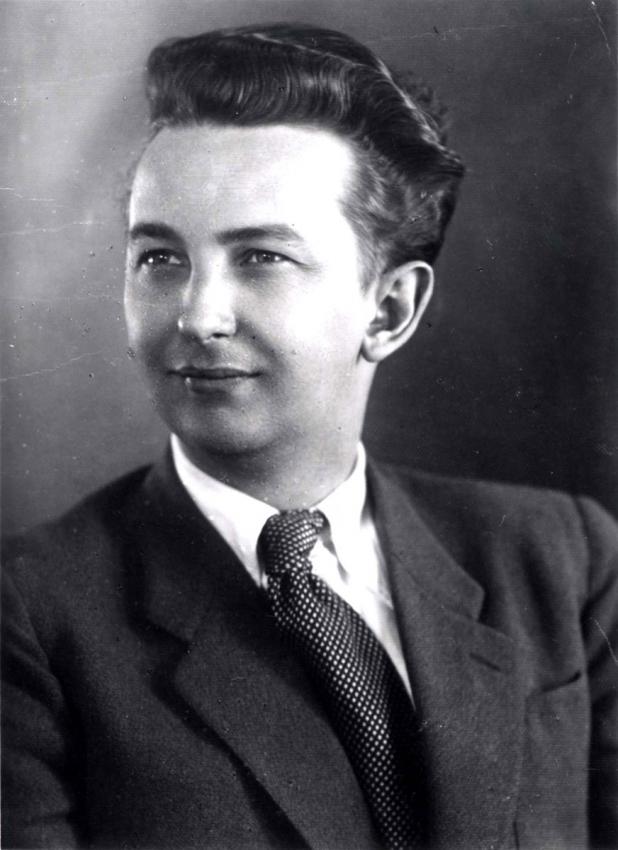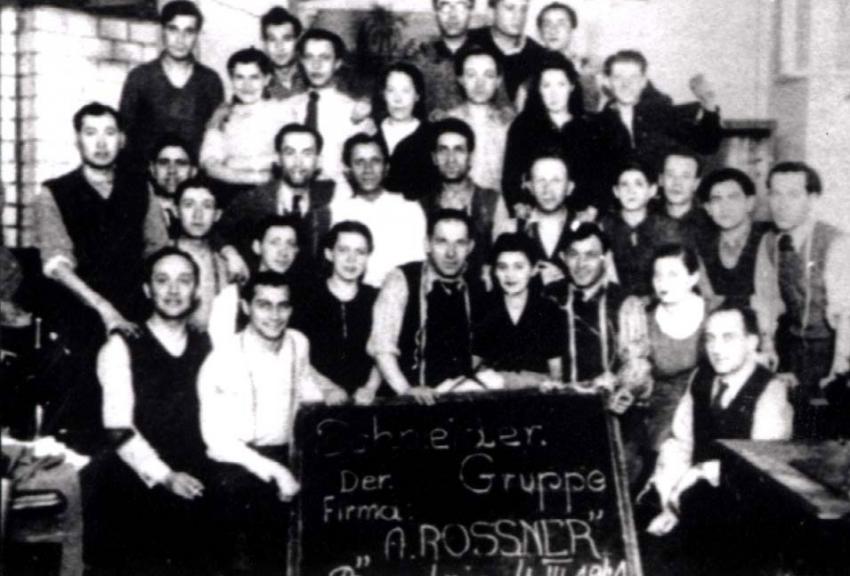Alfred Rossner was born in Oelsnitz in 1906, and grew up in nearby Falkenstein. Rossner never joined the Nazi party, and there is evidence to suggest that before the Nazi rise to power he had belonged to a Socialist youth organization. In the years before the war, he found employment at a Berlin textile plant owned by a Polish Jew by the name of Arje Ferleiger. Due to health issues, he was exempted from army service.
About eight months after the German invasion of Poland, Rossner arrived in Bedzin, a noted textile center in Zaglebie in annexed western Upper Silesia, where Jews made up some 80 percent of the town’s population. The German authorities at that time were appointing German “Treuhänder” (trustees) to take over the management of plants that had been confiscated from Jews. These German “trustees” continued to employ Jewish workers and relied on the expert advice of former Jewish owners. Before long, Rossner, who had excellent connections to both the German authorities and to local Jewish experts—among them his former Jewish boss, Ferleiger, who had settled in Bedzin after his expulsion from Germany in 1938—became the largest employer in Bedzin: he was now in charge of thousands of Jewish employees.
In contrast to other German industrialists, who were acting as private entrepreneurs, Rossner worked directly under the SS. His chief workshop (or “Shop”), the so-called “Schneidersammelwerkstatt,” which produced uniforms for the Wehrmacht,belonged to the SS economic organization under General Heinrich Schmelt. Production there was considered essential to the German war effort, and, therefore, the Jews who worked there were entitled to the protection of a special pass (“Sonderausweis”). The other large employer in Bedzin was the local Judenrat (Jewish Council); and it was somewhat in competition with the Rossner Shop and offered work in its various offices.
The Bedzin Judnerat, which formed a branch within the umbrella organization of Judenrats in Zaglebie, became, in the course of time, a tool in the hands of the German authorities in carrying out their genocidal policy against the Jewish population. With the progressive deterioration of the situation, and especially after the onset of deportations from the ghetto in May 1942, the Rossner special pass—blue in color—became a much-coveted possession, as it provided a measure of insurance against deportation. Each worker with a “Sonder” was allowed to protect two members of his/her family. Thus, single people could protect their parents, and married ones their spouse and child. It is within this situation that the activity of Rossner and his rescue achievements should be viewed.
From the outset Rossner stood out from other German Treuhänder by virtue of the kindness and humane treatment that he exhibited toward the Jews under his command. His closest workers—primarily former Jewish factory-owners, like Ferleiger, Tropauer, Kaminski, Rolnik, and others—did indeed enjoy his special protection. He defended them and their families against the SS by giving them prior warnings of impending deportations and by sending his German staff to free them at the last moment from the deportation train. He also went out of his way to protect and to orchestrate repeated opportunities for escape for Henrietta (Kitia) Altmann and her cousin Aron Ehrlich, a well-known pre-war Jewish communist. However, his interest and sympathies were by no means limited to a small entourage of so-called “Machers” (middlemen) and special wards.
According to Altmann’s testimony, during the first large deportation from Bedzin, in May 1942, Rossner drove in his one-horse buggy into the poorest quarters of the town shouting in Yiddish to the inhabitants not to be fooled by the summons of the Judenrat and urging them not to report for deportation. Another survivor, Edward Retman, has testified that after the final liquidation of the ghetto, in August 1943, as he was standing, along with thousands of others from the ghetto, on the street near the railway station, waiting to be loaded onto the cattle-cars, he recognized Obemeister Pajza, the chief German supervisor, and begged him to save his life. Pajza instructed him to remove his Jewish badge and then took him through the streets of Bedzin to the workshop at Kollataja Strasse. Retman later found out that the other shop at Fabrik strassewas already full of people and that it had been Rossner’s express order to remove as many Jews as possible from the waiting transports. In another reported instance, the survivor Karola Bojm, who, after the liquidation of the ghetto, hid for a whole week in a coal cellar, appeared in Rossner’s house in terrible shape and asked him to take her in. He allowed her to wash and eat, and the next day he took her to the workshop, where Jews were still working.
Following the final liquidation of the ghetto, in August 1943, the situation of Rossner and his much-decimated Jewish work force became more and more precarious. In December 1943, he was arrested by the Gestapo, and one month later was executed by hanging. The exact course of the proceedings and the nature of the charges that were brought against him are not clear, but there is little doubt that help to Jews figured prominently in them.
On September 28, 1995, Yad Vashem decided to recognize Alfred Rossner (posthumously) as Righteous Among the Nations.








